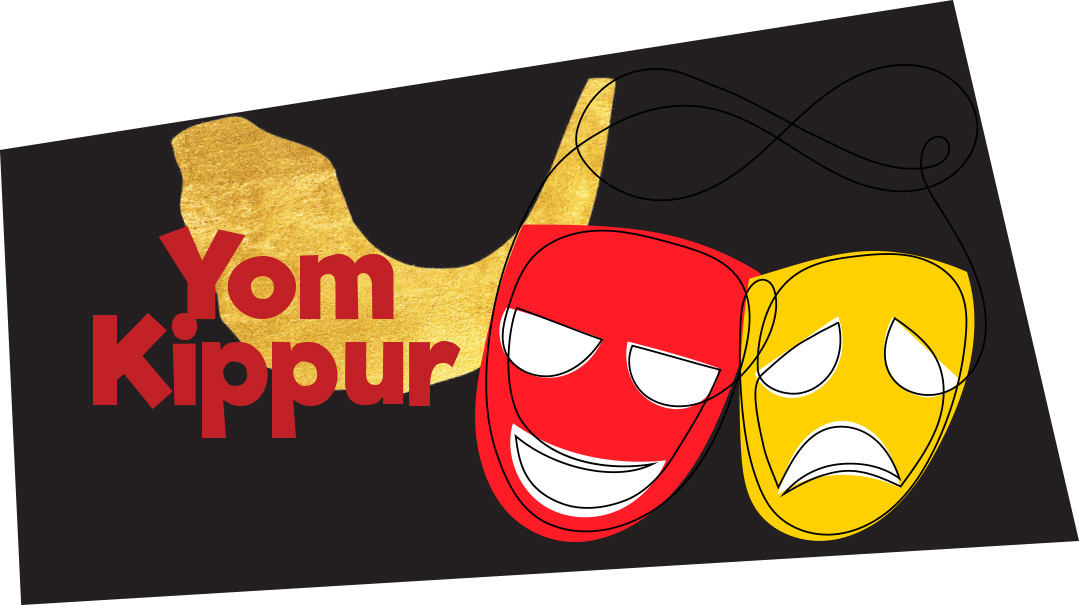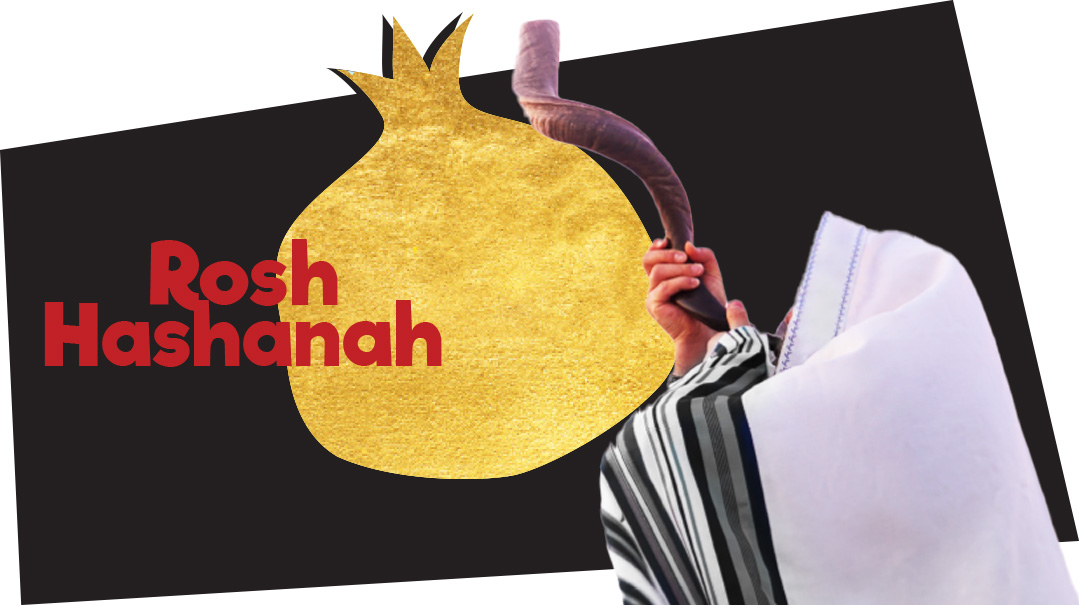In the Spirit of…Yom Kippur
| September 28, 2022Yom Tov trivia

Food for Thought
Serious, Somber… and Sad?
Some people think that Yom Kippur is a sad day. It shares a lot of the same prohibitions as Tishah B’Av, the saddest day of the year, and it’s a fast day, with no Yom Tov seudah. To top it all off, the adults are serious and somber and may even cry.
But actually, the Gemara tells us Yom Kippur is one of the two happiest days of the year! (The other is Tu B’Av). What? How can that be? How can Yom Kippur, this serious and somber day, be considered one of the most joyful days on the calendar?
The answer lies in remembering what the purpose of Yom Kippur is: “Salachti k’dvarecha.” This is the day when Hashem forgives our sins. It’s the day when Hashem cleans us from all the impurity we’ve accumulated over the past year.
Most significantly, it’s the day we make a concerted, 25-hour effort to reconnect to Hashem.
And there’s nothing more joyous than connecting with HaKadosh Baruch Hu.
It can sometimes be hard for kids (and even adults) to feel that connection, but that’s okay. All you have to do is remember that Yom Kippur is not a sad day. It’s a day of the greatest love and closeness imaginable.
The Dirtiest Stovetop
L
eah was angry. Why did she have to clean the stovetop again? It was such an annoying chore. Every single Friday, before Shabbos, she had to scrub and rub until the stovetop shone. But her efforts never lasted; within a few days the stovetop was yucky once again, and by the time the next Friday rolled around, you could never tell she’d ever cleaned it before.
One day Leah approached her mother and shared her irritation. “It’s pointless!” she said in frustration.
Leah’s mother looked at her daughter for a few moments and said, “I really don’t think it is, sweetheart.”
Leah was not convinced.
“You know what, Leah,” her mother said, “Fine. For the next three months, you can skip cleaning the stovetop.”
Leah was overjoyed. She spent the next 12 Fridays happily avoiding the stovetop.
When the three months were up, Leah’s mother called her into the kitchen. “Come, Leah,” she said. “Your three months are up. It’s time to clean the stovetop again.”
Leah gathered her cleaning supplies and went over to the stovetop. She looked at it in dismay. It looked so much worse than it ever had before! She started cleaning, scrubbing as she always had, but was barely making any headway. “Mommy,” she wailed, “it’s not getting clean! How did it get so dirty?”
Leah’s mother put a hand on her shoulder. “The stove gets dirty every time we cook. When we clean it up right away, or even once a week, it’s annoying — but it’s fairly quick and straightforward. But if we wait too long, the task becomes much harder. The grime is much more difficult to remove.”
Leah didn’t need her mother to finish her explanation. Now, she herself realized that cleaning the stovetop every Friday had made a difference, even though she couldn’t see it.
Sometimes we wonder: Why bother doing teshuvah if we’re just going to end up doing the same aveiros again? Why bother cleaning if it’s just going to get dirty again?
Like Leah, now we know the answer.
Did You Know?
Hashem created teshuvah because He knows that our nature is to stumble and make mistakes.
Even though we’ve done aveiros, Hashem wants us to return to Him. He waits for us!
It doesn’t matter how serious your aveiros are. It doesn’t matter what you’ve done. It doesn’t matter how terrible, awful, or horrible you might have acted — none of it makes any difference when it comes to teshuvah. Hashem waits for the teshuvah even of the worst sinners. Even evil people who have killed, kidnapped, or convinced others, Rachmana litzlan, to do aveiros! Every person can — and is actually required — to do teshuvah and come closer to Hashem.
Doing teshuvah is like tackling a tough stain. The more teshuvah you do, the cleaner and shinier your neshamah becomes.
Completing Your Teshuvah:
Turn it around! If you used your mouth to say lashon hara, focus on using your mouth to say kind words and words of Torah. If you used your hands to hurt, push, or punch people, use your hands to be helpful and fill the world with kindness and care.
The Practical Path
Remember, there are just three simple steps needed to fulfill the obligation of teshuvah (though there are other steps to enhance the quality of the teshuvah, these are the necessary ones). These steps are:
- Regret the aveirah. Focus on the distance that aveiros create between us and Hashem, and how doing the aveirah has harmed your holy neshamah.
- Let go of the aveirah. Figure out a way to avoid doing the aveirah again in the future.
- Vidui (confession). This is between you and Hashem; you don’t need to share with anyone else. Just tell Hashem: I did this aveirah. Feel regret. And commit to doing better in the future.
Quick Tip
Yom Kippur can be a long and tiring day, with no seudos or special mitzvos to break it up. And the grown-ups are usually preoccupied and fasting.
Depending on age, kids will spend part of the day davening and part of the day playing. It’s a good idea to prepare reading material in advance, before Yom Kippur; that way, there’s less of a chance of wasting big chunks of this special day on board games or chatter. Borrow a book of gedolim stories for kids, or read an illustrated halachah sefer. That way you can spend more of your time on Yom Kippur doing something really worthwhile.
Meet a Minhag
Some families have a minhag to “bet lekach” on Erev Yom Kippur. Each person in the family takes a turn holding out his or her hand and saying, “Ich bet lekach.” These Yiddish words mean, “I beg for cake.”
The reason behind this minhag is that if, chalilah, it was decreed that someone be reduced to begging during the upcoming year, they are yotzei begging by asking someone else for a piece of cake (traditionally honey cake).
G’mar Chasimah Tovah!
(Originally featured in Mishpacha Jr., Issue 930)
Oops! We could not locate your form.


